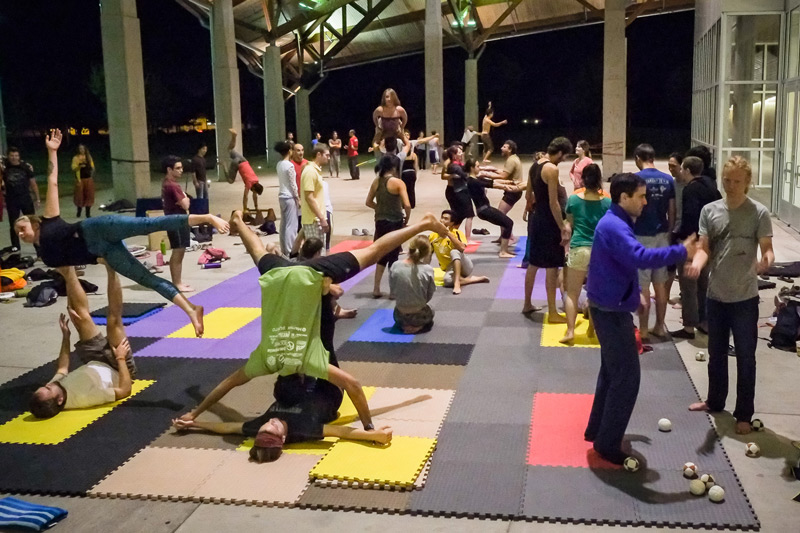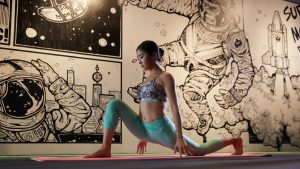
Yoga: The Fitness Component You Need to Know
Most of us have heard about the many positive health effects of yoga, but how much do we really know and understand about it? Yoga has more benefits than just relaxation and improved flexibility—it can also be a great way to help improve your fitness levels and overall health. In this article, we will explore the fitness component of yoga and what you need to know to get the most out of it.
List of Content
- 1. What is Yoga?
- 2. Why is Yoga Beneficial for Fitness?
- 3. Taking Things Up a Notch: Yogic Postures for a Complete Workout
- 4. Benefits of Incorporating Yoga Into Your Fitness Regime
- 5. Essential Equipment You Need for a Safe Yoga Practice
- 6. Tips and Tricks for Getting the Maximum Benefit From Your Yoga Practice
- You Ask, I answer

1. What is Yoga?
Yoga is an ancient practice derived from India. It is a comprehensive lifestyle that encompasses physical, mental, and spiritual disciplines. There are many different forms of yoga, but the underlying goal of most is to attain mental, physical, and spiritual balance.
Physical Benefits:
- Improves flexibility and strength
- Reduces stress
- Improves posture and balance
- Boosts energy levels and immunity
Mental Benefits:
- Increases self-awareness
- Promotes concentration and focus
- Reduces anxiety and depression
- Improves sleep
Spiritual Benefits:
- Enhances inner peace
- Connects you with your deeper purpose
- Develops compassion and kindness
- Increases self-acceptance

2. Why is Yoga Beneficial for Fitness?
Yoga is an ancient physical and spiritual practice, and nowadays it is seen as a way of improving one’s physical and mental health. Yoga provides a multitude of physical and mental benefits that can help improve overall fitness.
1. Exercise: Yoga offers one of the most complete forms of exercise, as it uses a variety of different poses to work every part of the body. It is a great way to build strength, increase flexibility and improve balance. In addition, yoga has been used to help people lose weight, improve their cardiovascular health and reduce the risk of injury.
2. Stress Relief: The practice of yoga has been found to be extremely effective at reducing stress and promoting relaxation. Yoga helps to increase the body’s production of endorphins, a hormone that is responsible for promoting feelings of wellbeing and relaxation. Regular yoga practice can help to keep stress levels low, reducing the risk of high blood pressure and other related health problems.
3. Improved Concentration: The breathing and meditation techniques that are used in yoga can help one to become more focused and enhance their concentration. It is believed that regular practice of yoga can improve focus and the ability to maintain concentration for longer periods of time.
4. Mental Clarity: It is believed that yoga can help to improve mental clarity, as it helps one to become more aware and mindful of their thoughts and emotions. It can also help to reduce anxiety, as many poses help to release tension and promote relaxation.
- Yoga helps to build strength, increase flexibility and improve balance
- Yoga can reduce stress and promote relaxation
- Yoga can help to improve focus and increase concentration
- Yoga can help to reduce anxiety and improve mental clarity
3. Taking Things Up a Notch: Yogic Postures for a Complete Workout
To really challenge your body and achieve a full-body workout, consider including yogic postures into your daily training routine. For many people, these ancient exercises can bring an extra layer of intensity to any exercise program.
Benefits of Yogic Postures: Yogic postures bring an unparalleled mind-body connection to your workout, plus they offer many additional benefits that you just can’t find elsewhere. By incorporating the full range of motion that yogic postures offer, you’ll be better able to access and strengthen the hard-to-reach deep muscles in your body, plus you can build your flexibility, endurance, and balance.
How to Incorporate Yogic Postures: Once you know what postures to use, you can start to incorporate them into your workout routine. Here are some yogic postures to try:
- Cat/Cow Pose
- Downward Facing Dog
- Chair Pose
- Upward Facing Dog
- Warrior Postures
- Camel Pose
These postures can be included in a yoga class, in addition to any other type of exercise program. Just make sure you’re doing each posture correctly and gradually increase the duration of each pose to make sure you’re working all the muscles in your body.
4. Benefits of Incorporating Yoga Into Your Fitness Regime
Increased Flexibility
Yoga is well known for promoting flexibility. It stretches and strengthens muscles in ways that other fitness exercises don’t. Even if you don’t make it to the gym to do weight training, yoga will help increase your body’s flexibility, loosening areas of tension and preventing muscle strain and injury.
Developing Balance
Balance can help you in almost any sport, and yoga is a great way to work on it. It doesn’t matter if you’re an aspiring gymnast or just trying to stay fit, building good balance can help you with everyday tasks. With yoga, you’ll be able to counterbalance your body, which translates into more efficient workout routines. Here are some of the benefits:
- Improved sense of balance
- Strengthens the core to help with daily activities
- Ability to move more efficiently
- Improved focus and mental stability
Stress Relief
Yoga offers plenty of mental benefits as well. It encourages relaxation and meditation, which can be great when it comes to relieving stress. Taking a few minutes out of your day to focus on yourself and not worry about external stressors can be a huge benefit for your mental health. And doing yoga in a group setting can be even more beneficial because of the camaraderie and positive atmosphere.
Better Breathing
Breathing is one of the fundamentals of yoga, and through yoga you can learn to control your breath better. Improved breathing can lead to improved focus and an overall calming of your body. Your body will benefit from the oxygen that is brought in through your breath, and your mind will benefit from the improved focus and relaxation.
5. Essential Equipment You Need for a Safe Yoga Practice
Yoga Mat
One of the most important pieces of equipment you’ll need for a safe yoga practice is a high-quality yoga mat. One that has good non-slip grip and is comfortable to land on. It’s also important to choose one that is durable and won’t break down quickly, as you’ll be spending a good deal of time on it. If you’re on a budget, there are some great affordable mats available. In general, however, it’s best to invest in a good quality one that won’t need to be replaced after a few uses.
Yoga Bricks and Straps
Yoga blocks and straps are great tools for beginners and more advanced practitioners alike. Blocks provide extra stability to help you deepen poses, and straps can be used to help modify poses if necessary. Blocks also assist with alignment, providing a physical reference point for you to tune in to. Something to remember here is that you don’t need to buy the most expensive blocks and straps on the market, just the ones that feel most comfortable for you.
Yoga Bolsters and Blankets
Yoga bolsters and blankets are great for restorative yoga, and can add comfort and warmth to your practice. There’s no need to buy blankets and bolsters if you don’t feel the need for these pieces of equipment. However, they do come in handy for the longer, slower classes when you’re focusing on relaxation and mindful breathing.
A Good Teacher
Last but certainly not least, having a good teacher is essential for a safe yoga practice. A certified yoga teacher who understands the principles of alignment, understanding, and safety can offer invaluable guidance and support that will help you get the most out of your practice. Not only will they be able to correct any mistake you make or demonstrate the correct way to do a pose, but they will also be able to modify poses to suit your needs.
6. Tips and Tricks for Getting the Maximum Benefit From Your Yoga Practice
1. Prioritize Your Time: Schedule yourself a set amount of time each week for your yoga practice. Before diving right into your practice, consider the way it will give you the most benefit. You may want to focus on a certain area, or practice the same style of yoga every time. Commit to that time and practice consistently.
2. Start Slow: Ygoa focuses on building strength, balance, and flexibility slowly and gradually over time. There’s no need to rush into difficult poses right away. Allow yourself plenty of time to ease into a pose and work up to mastering more advanced postures. Take breaks when you need them.
3. Listen to Your Body: Pay attention to what your body is telling you and don’t push it too hard. If you experience pain during your practice, stop and adjust accordingly. Yoga focuses on being comfortable in each pose so that you can move deeper into your practice. Practicing with intensity is not the same as pushing yourself beyond your limits.
4. Be Open-Minded: Although having a regular practice is important, it’s also beneficial to be open to new ideas and methods. Experimenting with different styles of yoga or trying out something new can open up a whole new approach to your practice. Keep an open mind and you may be surprised at what you discover.
You Ask, I answer
Q: What is yoga?
A: Yoga is an ancient practice and form of exercise that focuses on physical postures and breathing techniques. It is seen as a holistic approach to health, combining strength, flexibility, and mental and spiritual well-being.
Q: What are the benefits of yoga?
A: Yoga can help improve your overall physical health and mental clarity. It has been known to reduce stress, strengthen and tone muscles, improve balance, increase flexibility, and even reduce blood pressure. It is also a great way to relax, develop mindfulness, and connect to your inner self.
Q: Can anyone do yoga?
A: Absolutely – yoga is suitable for all levels, age groups, body types, and capabilities. Even if you are just beginning, there are many modifications and props available to help you find the right pose for your specific body or objectives.
Q: What do I need for yoga?
A: All you really need for most types of yoga is a comfortable space with no distractions. You might want to invest in a yoga mat, blocks, straps, or a bolster to make postures more comfortable and easier to perform.
Yoga is an incredible form of exercise for all ages and levels of fitness! So if you’re looking for a way to stay fit and to escape the stresses of everyday life, you need to give yoga a try! Your body and mind will both thank you. Namaste!

